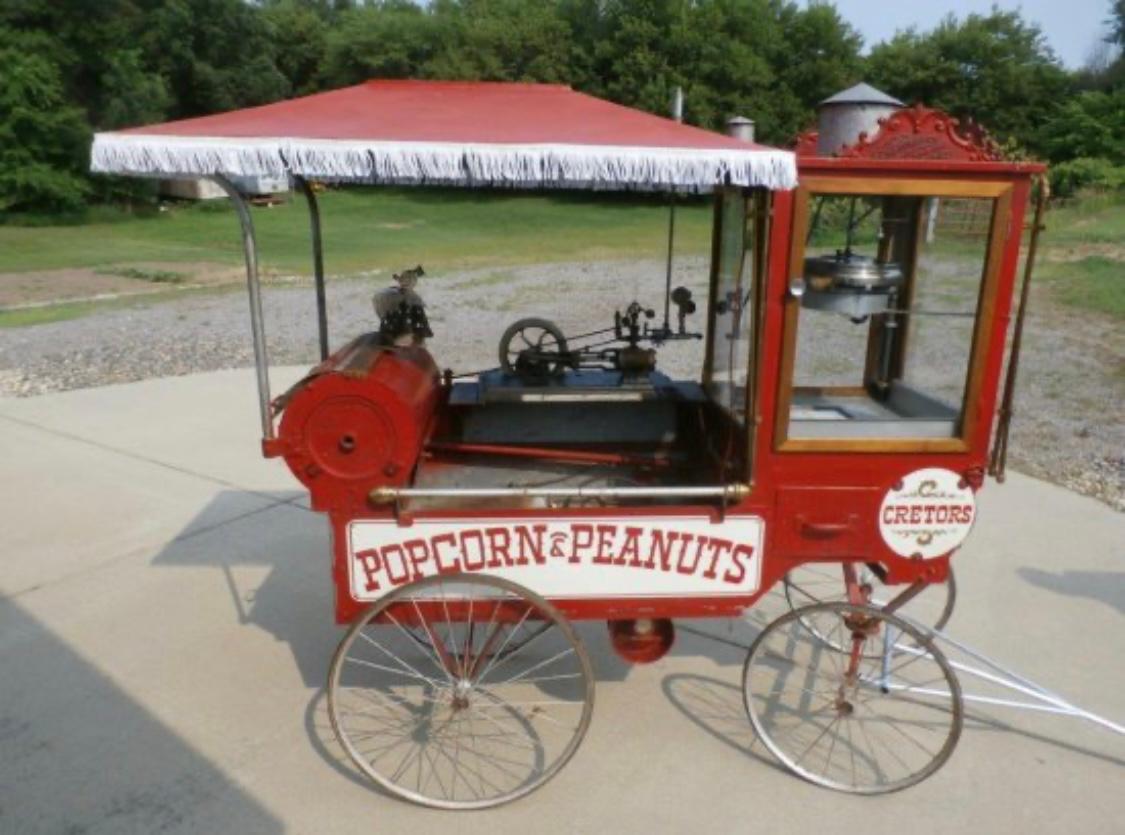
Who invented popcorn?
You could say “no one,” as if they’ve always existed. In fact, there are traces of this food dating back to 3,600 BC in New Mexico, where corn was widespread. It was the indigenous peoples of the Americas, in Mexico and Peru, who discovered that intense heat makes corn kernels “pop.”
The Aztecs used them as a decorative element for their hair, but also wore them as necklaces, often during ceremonies honoring their gods. The corn was cooked on heated stones, or by placing the entire cob among the embers of a fire.
From the Discovery of America to the Cinema
As you know, in 1492, Christopher Columbus landed on the American coasts, believing he had reached the Indies. Both he and Hernán Cortés, during their explorations, saw how the indigenous people used these kernels. Cortés even said:
“The people scattered seeds of roasted corn, called momocthitl, a kind of grain that pops when scorched and reveals its contents, appearing like a very white flower.”
However, popcorn remained confined to the Americas, while corn arrived in Europe and was called “granturco” (Turkish grain). The error in the name was due to Columbus’s “geographical confusion”; the term “Turkish” was used generically to indicate anything that was exotic.
In Europe, the cultivation of corn spread immediately and partially replaced other “poor” cereals like millet. In some areas of Italy, it became practically the only food, for example, in the Veneto region in the form of polenta, leading to vitamin deficiency diseases, particularly pellagra.
Another account comes from the Spanish missionary Bernabé Cobo, who wrote in the early 1600s:
“The Indians roast a certain type of corn until it explodes. They call it pisancalla and use it as a kind of pastry.”
February 22, 1630
This can be considered the official date that sanctioned the use of popcorn as an “official food for important celebrations.” The Native American Quadequina, of the Wampanoag tribe, brought a tribute to the English colonists of Plymouth, Massachusetts, consisting of a leather bag full of popcorn, among other typical products. It was Thanksgiving Day.
The big breakthrough came at the Chicago World’s Fair in 1893, where Charles Cretors presented his invention: a mobile steam-powered machine for making popcorn, which could also roast peanuts and coffee, and cook chestnuts.
Its success was so great that the machine was placed in fairs and circuses, used during sporting events, and, soon after, adopted by movie theaters (which officially began in 1896). Popcorn progressively became a snack to munch on while walking, with more and more street vendors ready to offer takeout bags.
Around 1925, the first electric machine arrived, and in 1927, the largest popcorn production company was founded by Reverend Ira E. Weaver. The last innovation was the use of the microwave in 1945; its mechanism allows the kernels to be cooked in minutes, (theoretically) without adding condiments.
Fun Facts about Popcorn
Let’s start with the big numbers!
- In the States, about 17.5 billion kernels of corn “pop” each year, and the average American consumes 67 extra-large movie theater buckets.
- Besides being a tasty snack, whether sweet or savory, its elastic properties make it useful for packaging fragile items in place of Styrofoam, with the added benefit of being biodegradable.
- At least six locations in the United States claim the title of “Popcorn Capital”: Valparaiso and Van Buren (Indiana), Ridgway (Illinois), Schaller (Iowa), and North Loup (Nebraska). But in my opinion, only one comes out on top: Marion, Ohio.
- Marion is home to the only museum in the world dedicated to popcorn, which preserves numerous ancient, perfectly restored machines, some of which are more than 100 years old. By clicking here you can find the official website..
- Marion is also the site of the Popcorn Festival, which attracts 250,000 people each year and is considered one of the 100 largest events in North America.
- National Popcorn Day is held on January 19.
The kernel contains a percentage of water that, when heated, begins to boil, turning into steam. The steam pressure inside the kernel increases until the hull gives way, causing it to burst. The white part that emerges is the starch inside, cooked by the water before the corn made a “POP.”
EVENTS
Exhibitions
Equestrian Concerts
International Events
Opening Ceremonies
Swiss Popcorn
Via della Salina, 2
CH – 6600 Muralto
info@swisspopcorn.ch
CHE-238.637.046
Join us on Instagram
Copyright © 2025 Swiss Popcorn. All Rights Reserved. Created by Domoticach.ch
